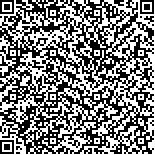| 摘要: |
| 开关窗是建筑使用者控制室内热环
境和改善室内空气品质最直接且简单的手
段,同时对建筑节能也有重要影响,因此对
人员开关窗行为的定量化描述是非常必要
的。本研究通过对夏热冬冷地区—?—自贡市
7户住宅夏季人员开窗行为的实际监测,得到
以下结论:发现实测样本中存在三种明显差
异的典型开窗行为,分别是习惯性开窗型、
高强度开窗型和习惯性关窗型;对非环境因
素分析得出,一天中不同时段以及家庭成员
吸烟与否对开窗概率影响显著,而是否为工
作日以及住户所在楼层对开窗概率无明显影
夏热冬冷地区居住建筑夏季人员开窗行为实测与建模研究 *
刘奕巧 王新如 崔 颖 魏 绅 潘 嵩 LIU Yiqiao, WANG Xinru, CUI Ying, WEI Shen, PAN Song
Measurement and Modelling of Occupants’ Window Opening Behavior in Residential
Buildings in the Hot Summer and Cold Winter Regions in Summer
中图分类号 TU228
文献标识码 B
文 章 编 号 2095-6304(2021)05-15-09
作者简介
刘奕巧: 吉林建筑大学寒地建筑综合节能教育部重点实
验室,马来亚大学机械工程学院,博士研究生
王新如( 通讯作者):天津商业大学机械工程学院,讲
师,xinru5263@ticu.edu.cn
崔 颖:宝武清洁能源武汉有限公司
魏 绅: 伦敦大学学院巴特莱特可持续建筑学院,副教授
潘 嵩: 吉林建筑大学寒地建筑综合节能教育部重点
实验室,北京工业大学绿色建筑环境与节能
技术重点实验室,教授
*寒地建筑综合节能教育部重点实验室开放课题项目;
河北省国际科技合作基地(20594501D);“十三五”国
家重点研发计划(2017YFC0702200)
响;对于环境因素而言,当室外温度超过32 ℃,开窗概率开始降低,空调开启比例升高;室外温
度超过37 ℃,空调开启比例达到100%,但开窗比例仍有11.1%;建立了基于二元逻辑回归的夏季
高强度开窗行为预测模型,模型的预测准确率达到了86%,而室外温度是该模型最为重要的预
测因子。本文的研究成果可以用于细化能耗模拟软件及室内空气品质评价软件对该类型住宅建
筑开窗行为特征的描述,对住宅建筑节能设计、运行、改造以及住宅室内空气品质和热舒适研
究均有一定程度的参考意义。 |
| 关键词: 夏热冬冷地区 居住建筑 典型开窗行为 预测模型 |
| DOI:10.13791/j.cnki.hsfwest.20210503 |
| 分类号: |
| 基金项目:寒地建筑综合节能教育部重点实验室开放课题项目;
河北省国际科技合作基地(20594501D);“十三五”国
家重点研发计划(2017YFC0702200) |
|
| Measurement and Modelling of Occupants’ Window Opening Behavior in ResidentialBuildings in the Hot Summer and Cold Winter Regions in Summer |
|
LIU Yiqiao,WANG Xinru,CUI Ying,WEI Shen,PAN Song
|
| Abstract: |
| Occupants’ window opening behavior has a great impact on indoor air quality,
human thermal comfort and building energy consumption by affecting the ventilation rate.
Especially in the context of COVID-19, indoor air quality and ventilation are particularly
important. Many studies have confirmed the importance of adequate ventilation in diluting
virus concentration and reducing the dose of continuous inhalation of harmful substances.
Therefore, it is very necessary to quantitatively describe the behavior of opening and closing
windows. In order to improve the accuracy of energy consumption prediction model and
indoor air quality evaluation model, the window opening behavior model should be established
according to the characteristics of different seasons in different climate zones. At present,
although the research on residential window opening behavior in China covers five major
climate regions, the research cases are mainly concentrated in cold regions and severely
cold regions, and there are few research cases on residential window opening behavior in
hot summer and cold winter region. Whether these existing research cases can represent the
vast region with hot summer and cold winter needs to be verified by more practical cases. In
addition, most of the existing studies adopt the concept of “average occupants behavior” to
extract the average characteristics of all test objects. However, the window-opening behavior
is very complicated, and the prediction model established by “average occupants behavior”
cannot predict the behavior with great difference in practice. In view of the above deficiencies,
this paper conducted practical monitoring on seven households in Zigong City in hot summer
and cold winter area. Firstly, the window opening behavior characteristics of each household
were analyzed from the daily window opening probability and the frequency of opening and
closing windows. According to the index of “daily window opening probability (R)”, it is found that there are three typical window opening behaviors with obvious differences in the measured samples. They are habitual window opening
type (R > 95%), high-intensity window opening type (50% < R < = 95%) and habitual window closing type (R < = 5%). Secondly, the influence
of non-environmental factors on window opening behavior was analyzed from four perspectives: different time of day, whether family members
smoked, whether it was a working day and different residential floors. It is found that:1)The window opening action occurred most frequently
from 7:00-8:00 in the morning, and the window closing action mainly occurred from 20:00-21:00 in the evening. 2) The daily window opening
probability of households with smoking habit is significantly higher than that of non-smoking households. 3) There was no significant difference
in window opening behavior between weekdays and weekends. 4) High-rise residential buildings do not show a high window opening rate, while
the window opening probability of the other three types of households is above 80%, and there is no significant difference with the increase of
floor height. Therefore, in this study, the impact of residential floor on window opening behavior is not significant. Then, the relations between
various environmental factors and high-intensity window opening behavior was explored from three aspects: indoor environment, outdoor
environment and difference between indoor and outdoor environment. An interesting finding is obtained: when the outdoor temperature is
24~32 ℃, people tend to open windows for ventilation to ensure indoor thermal comfort. When the outdoor temperature exceeds 32 ℃, the
window opening probability decreases and the air-conditioning opening ratio increases. When the outdoor temperature exceeds 37 ℃, the air-
conditioning opening proportion reaches 100%, but the window opening proportion is still 11.1%. From the point of view of building energy
conservation, opening windows when air conditioning is running will increase the heat load of the room, which is not conducive to energy
conservation, but running air-conditioning for a long time will reduce indoor air quality, which is not conducive to human health. The balance
between energy saving and air quality needs to be studied urgently. Finally, the prediction model of high intensity window opening behavior in
summer is established based on binary logistic regression. The prediction accuracy of both training set and validation set model reached 86%, and
outdoor temperature, indoor and outdoor PM 2.5 concentration difference, indoor humidity were considered as the most important predictors of
the model. The results of this paper could be used to refine the description of window opening behaviour characteristics of this type of residential
buildings in both energy simulation software and indoor air quality evaluation software, and can also support design, operation and renovation of
residential buildings for energy efficiency, indoor air quality and thermal comfort. |
| Key words: Hot Summer and Cold Winter Zone Residential Buildings Typical Open-Window Behavior Prediction Models |


